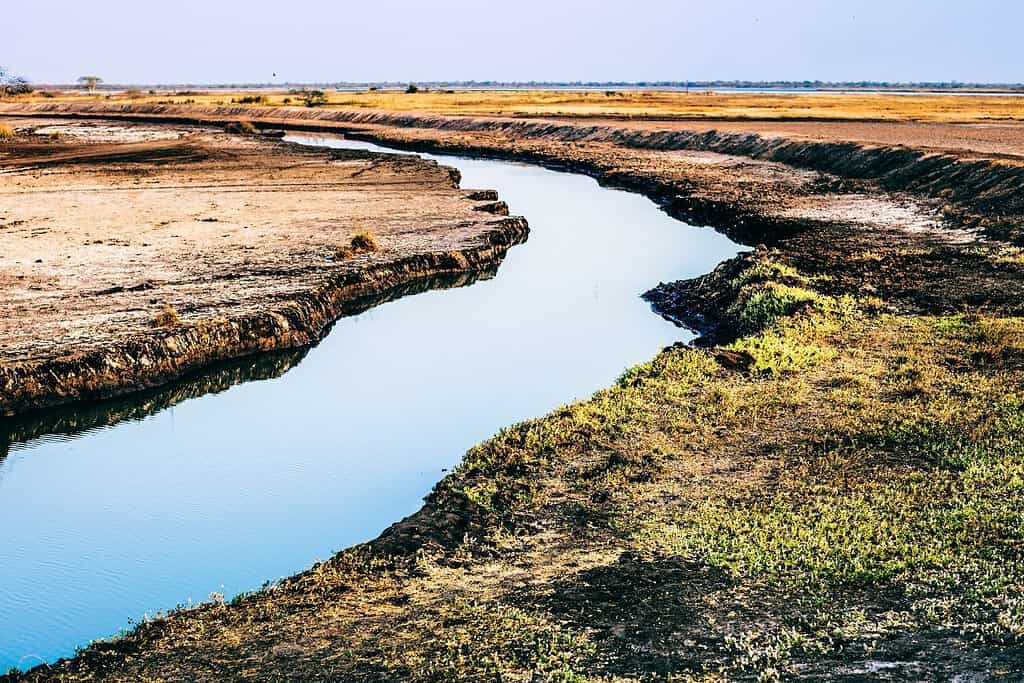Table of Contents
Where is Gambia located? Gambia is a country situated in West Africa, along the Atlantic coast of the African continent. It is one of the smallest countries in Africa, nestled within the larger nation of Senegal.
Gambia is positioned on the westernmost tip of the African continent, with the Atlantic Ocean to its west. It shares its land borders with Senegal, which surrounds Gambia on all sides except the western coast. To the north, south, and east, Gambia is bordered by Senegal.
Where is Gambia located: Africa.
Location of Gambia on the World Map
Gambia World
Map of Gambia.
Gambia Profile – Where is Gambia located
Here are 10 of the most important facts about Gambia:
- Official Name: Republic of The Gambia
- Capital City: Banjul
- Population: Approximately 2.4 million (as of 2021)
- Official Language: English
- Currency: Gambian Dalasi (GMD)
- Major Religion: Islam (predominantly Sunni)
- Government: Republic
- Area: Approximately 10,689 square kilometers
- GDP (Gross Domestic Product): $1.04 billion (as of 2021)
- Main Exports: Groundnuts (peanuts), fish, and agricultural products.

Borders of Gambia
The Gambia shares land borders with one country.
| Bordering Country | Approximate Length of Border (in kilometers) |
|---|---|
| Senegal | 749 km |
Gambia Map
Navigate over this map with your mouse to discover the Gambia map location.
Gambia
Most Extreme Points of Gambia
Gambia has various extreme points in different directions:
- Northernmost Point: Near the border with Senegal, close to the town of Farafenni.
- Southernmost Point: The southern tip of the Kartong Peninsula, where Gambia meets the Atlantic Ocean.
- Easternmost Point: The point along the Gambia River’s eastern bank, near the town of Basse Santa Su.
- Westernmost Point: The point along the Atlantic Ocean coastline, near the town of Barra.
Highest Points of Gambia
The highest point in Gambia is the unnamed hill near Bintang Village, with an elevation of approximately 53 meters above sea level.
| No. | Mountain | Elevation (meters) |
|---|---|---|
| 1 | Unnamed Hill near Bintang Village | 53 |
| 2 | Hill near Gunjur | 50 |
| 3 | Hill near Jiboroh | 47 |
| 4 | Hill near Basse Santa Su | 46 |
| 5 | Hill near Bansang | 45 |
How large is Gambia?
Gambia spans an area of around 10,689 square kilometers, positioning it as one of the smaller countries globally in terms of land area.
Comparison with Neighboring Countries
Here is a comparison of Gambia with its neighboring countries based on approximate size and population as of 2021:
| Country | Approximate Size (sq. km) | Approximate Population | Gambia’s Size Compared to Neighboring Country | Gambia’s Population Compared to Neighboring Country |
|---|---|---|---|---|
| Senegal | 196,722 | 17 million | 0.63 times smaller | 1.06 times smaller |
| Guinea-Bissau | 36,125 | 2 million | 3.49 times bigger | 10.25 times bigger |
| Guinea | 245,857 | 13 million | 0.50 times smaller | 1.35 times smaller |
| Mali | 1,240,192 | 20 million | 0.07 times smaller | 0.65 times smaller |
What to Visit in Gambia?
Gambia offers a unique blend of natural beauty, rich culture, and diverse landscapes. Here are the top 10 tourist attractions:
- Banjul: The capital city of Gambia, situated on St. Mary’s Island, is known for its historical sites, bustling markets, and vibrant street life.
- Jufureh and Kunta Kinteh Island: These historic sites along the Gambia River are associated with the transatlantic slave trade and are now UNESCO World Heritage Sites.
- Makasutu Culture Forest: A lush forest reserve where you can immerse yourself in Gambian culture, with guided tours, traditional music, and wildlife viewing.
- Abuko Nature Reserve: Gambia’s first protected wildlife area, home to various bird species, monkeys, and other native wildlife.
- Janjanbureh (formerly known as Georgetown): A historic town on Janjanbureh Island in the middle of the Gambia River, with colonial-era architecture and historical landmarks.
- Serekunda: The largest urban center in Gambia, offering a bustling market scene, lively nightlife, and opportunities to experience local Gambian life.
- Bijilo Forest Park: A coastal nature reserve with walking trails, home to the endangered green vervet monkey and a variety of bird species.
- Kachikally Crocodile Pool: Located in Bakau, this sacred pool is home to numerous Nile crocodiles and is a place of cultural significance in Gambia.
- Basse Santa Su: A bustling market town in eastern Gambia, known for its vibrant street markets and as a gateway to the Gambia River.
- Kololi Beach: A popular beach destination with a range of resorts, restaurants, and water sports activities.
These Gambia destinations provide a diverse array of experiences, from delving into ancient history and religious significance to savoring the contemporary city lifestyle and immersing yourself in the natural splendor of Gambia’s landscapes. Please be aware that certain locations may come with particular restrictions or entry prerequisites, especially religious sites, so it’s crucial to verify the details before scheduling your trip.
More About Gambia
[the-post-grid id=”50357″ title=”Gambia Main page”]
